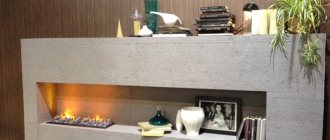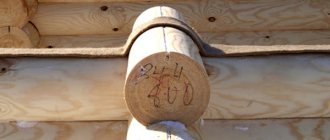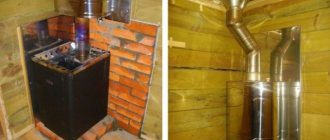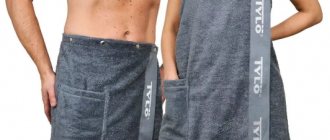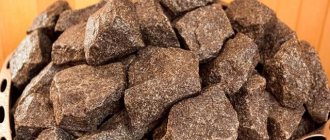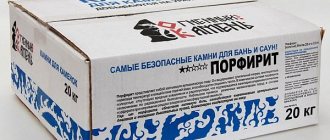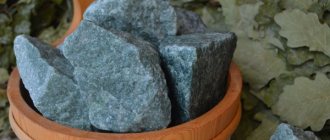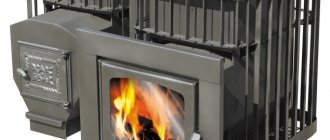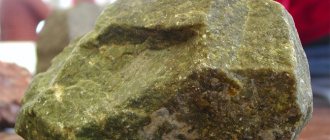This stone has many names. In Scandinavian countries this mineral is called firestone, in continental Europe - soapstone. In Russia it is called potting and soft stone.
This stone contains talc, so it does not oxidize and feels greasy to the touch.
In the past, soapstone was used to make vessels for storing hot food. This use is due to the ability of the stone to retain heat for a long time.
Currently, soapstone is used to make stoves and fireplaces.
Heat capacity as one of the main qualitative characteristics of the hearth
One of the main characteristics of a fireplace or stove with optimal parameters is heat capacity. It lies in the ability of the hearth to generate a sufficient amount of heat and release it into space in a large volume, moreover, even after the wood in the firebox has already burned out. That is, heat capacity is not only combustion indicators in the active phase of operation of the device, but also the ability for heat accumulation, which allows the accumulated heat to be released into the room some time after the end of the heating process.
STOVE FINISHING
Furnace finishing with tiles and soapstone
Furnace finishing with ceramic tiles
Ceramic tiles are one of the most ancient finishing materials. It is made from clay and water and fired at high temperatures; a glaze is applied to the front surface, which also hardens when fired in a kiln. Despite the fact that tiles have been known to mankind for quite a long time, they are still probably the most popular facing material. Tiles are used for cladding walls and floors in the bathroom, kitchen, corridors, administrative buildings and residential buildings . Bathroom tiles are used on floors, walls and when installing bathtubs.
Today, stoves are usually built as decorative elements; they are rarely used for their intended purpose. Finishing stoves with ceramic tiles is a special task that few people can do. It is important to know the technology here so that the tiles do not fall off over time as a result of temperature fluctuations and thermal expansion.
High strength and other properties make tiles an ideal material for the premises listed above.
Tiles are also used for cladding stoves and fireplaces; I would especially like to highlight this area, since the work of tilers in this case is a kind of work of art.
If the temperature of the surface on which the tiles will be laid does not exceed 1000 degrees Celsius, then special mastic can be used. At higher temperatures, no mastic will withstand and you will have to use a metal profile, brackets and other mechanical devices during installation.
Tiles are often used to decorate stoves. This is a special facing ceramic tile with the addition of fireclay sand and other components. A distinctive feature of the tiles is the presence of a special fastening device on the back side. With its help, the tiles are attached to the stove. The cladding is carried out simultaneously with the laying of the stove; seams of 2 or 3 mm are left between the elements. Laying begins from the corners, then completes the horizontal row. During the finishing process, the stove is covered with so-called chain mail, which is strong on one side and elastic on the other. This surface is easy to care for, it washes well, at the same time it is incredibly beautiful and creates a unique look in the room.
Soapstone tiles: properties and application features
T alcochlorite - in the Finnish version it sounds like “hot stone”. This is an environmentally friendly natural mineral belonging to rocks (from the group of chlorites, meta-aluminosilicates of iron and magnesium). Soapstone chlorite is formed in the form of mountain layers, it has a remarkable property: heat accumulation - heat accumulation, thanks to which it has found successful use in the construction of fireplaces for residential premises, in the arrangement of warm walls and floors in swimming pools, etc. Lining with soapstone chlorite not only allows heaters and fireplaces to acquire aesthetically attractive appearance, but also to obtain additional properties of heat accumulation and its uniform release.
The heat capacity of soapstone cladding is two and a half times higher than that of our usual stove brick. When exposed to high temperatures, it does not fade, melt or crack. Due to its excellent natural properties, soapstone is used in the construction of furnaces. In the lining of furnaces, soapstone easily withstands excessively high temperatures (up to 1600 degrees Celsius), and perfectly accumulates thermal energy, which it releases evenly and for a long time. Soapstone tiles are an almost ideal fireproof material, which has been successfully used in construction for about a hundred years - not only in Russia, but in Italy and Finland.
Soapstone chlorite and soapmagnesite
And processed soapstone is usually used. You can buy it in the form of tiles, bricks, slabs, powder and crushed stone (for various repair and construction purposes). As a rule, soapstone in powder form is mixed with liquid glass to obtain a substance that is unique in its fire-resistant properties, which perfectly seals cracks and treats surfaces with expected high heating. The sale of soapstone chlorite is carried out by all specialized shopping centers, and the Vas Dom company not only sells soapstone chlorite, but also builds baths and saunas using it.
Ordinary soapstone tiles are not afraid of sudden changes in temperature (therefore they do not crack), such tiles are durable and reliable, ready for use at any time of the year and at any temperature, provide unique healing and light steam, promote uniform distribution of heat throughout the room, which allows steam on the lower shelves without fear of getting a portion of cold air and catching a cold. It is hygienic, environmentally friendly and has excellent tactile characteristics. At the same time, it has been proven that soapstone itself is capable of equalizing blood pressure, improving blood circulation and helping to resist respiratory infectious diseases, i.e. increases the body's defenses.
Assembly, adjustment and fastening of fireplace linings with soapstone chlorite is carried out directly at the installation site. The fastening of blocks and tiles is carried out using a special adhesive based on soapstone powder and liquid glass, pins and staples. If you want to purchase guaranteed soapstone tiles or a fireplace, buy only Finnish-made products, since Finnish companies have long and successfully specialized in their production.
Soapstone heaters do not transfer “firewood into the chimney”: they consume fuel approximately 2 times less than conventional brick stoves. Brick, by the way, is simply a heat insulator, but not a conductor of heat. In a couple of hours of heating, a small fireplace or heater made of soapstone accumulates such an amount of heat that is enough to heat a room (approximately 40-120 sq. m.) for a day. It is not for nothing that soapstone stoves are considered both the most successful for a Russian bath and the most expensive. Soapstone stoves create conditions in the bathhouse that cannot be achieved from conventional stoves. Today, for construction purposes, soapstone is used in the form of powder, crushed stone and slabs, cladding.
Fireplaces made of soapstone - up to two days of heat release
Today, the most popular, in demand and effective material for achieving a high level of heat capacity and heat accumulation is soapstone, or as it is also called - soapstone, soapstone. Fireplaces made of soapstone (made in Russia and Finland) are effective heating devices that can provide the highest level of heat capacity, heat accumulation and heat transfer. Like classic fireplaces, they consist of a firebox and lining. Soapstone is used in such areas in cladding, and also in most cases in internal structures. Depending on the amount of stone used, the design and the built-in combustion and air supply systems, such fireplaces can continue to release heat into the surrounding space from 2 hours to 2 days!
Choosing a stone for room decoration
Due to its temperature resistance, the coating is recognized as one of the best for covering surfaces for various purposes. It is produced in several types:
The purchase is appropriate if the goal is cladding or flooring work, in particular the construction of heated floors in residential premises or baths, swimming pools, saunas, as well as cladding of stove units, fireplaces, etc.
Suitable for decorative finishing of walls, niches, partitions, columns, arches, decorative fireplaces. By accumulating heat, it plays the role of thermal protection.
Ragged Stone
This type of soapstone is also suitable for decorative cladding.
Crushed stone and powder are not used for interior decoration.
Modern equipment and accessories
Of course, such unique properties of soapstone are enhanced by modern manufacturers with modern technologies and systems that are integrated into fireplaces and stoves made of this material. To achieve the maximum level of heat accumulation, heat transfer and savings, the following systems are used:
- multi-level combustion air supply
- clean afterburning of flue gases and harmful substances, the energy of which is also used to generate heat
- convection systems
- hermetically sealed firebox design
Soapstone tiles: advantages
There are many reasons to choose potted stone for finishing:
- large reserve of heat during cooling;
- tolerates temperature changes well - does not crack, does not delaminate;
- despite the unique origin, the price of soapstone tiles remains within acceptable limits;
- optimal heat radiation makes the surface of the stone extremely pleasant to the human body - for this property the material is called “velvet warmth”;
- the coating looks good due to its noble shade with a system of patterned veins;
- When heated, whole rock releases vitamin D into the air, which improves health, improves immunity, and improves the condition of the skin of steamers.
A profitable and stylish element of interior design
A fireplace made of soapstone (Russia) is also a very stylish heating device due to its natural color and soapstone color. Soapstone has a pleasant gray color in a spectrum of shades from light to dark, and its surface is often decorated with unique veins created by nature itself over millions of years. The surface texture is usually rough, rough, but if desired, the user can choose a cladding with a treated, smooth surface. Of course, global and Russian manufacturers offer a wide selection of designs, shapes and designs of such fireplaces.
Talkomagnesite or soapstone
Two varieties of rock, almost identical in composition, but different in the concentration of minerals. And this plays a decisive role in the use of natural stone in production, because it is magnesite that gives the stone the unique thermophysical properties and strength that a stove should have.
The ratio of minerals in the rock
| Components | Talkomagnesite | Soapstone chlorite |
| Talc, % | 40-50 | 41-46 |
| Magnesite, % | 40-50 | 5-10 (rarely up to 25) |
| Chlorite, % | 5-8 | 30-35 |
| Impurities | Minimal amount | A lot |
An increased content of chlorite in stone leads to serious disadvantages - deformation of products during prolonged heating. This happens due to the evaporation of water from the depths of the stone.
Price is another factor that significantly influences the choice in favor of one material or another. The cost of soapstone is 20-30% lower than the cost of soapstone.
Experts recommend using soapstone chlorite for lining fireplaces, stoves and steam rooms; it can fully cope with this task, and use soapmagnesite, which is heat-resistant and resistant to aggressive influences, in masonry.
How to distinguish soapstone from soapstone?
In order not to fall for the tricks of unscrupulous sellers and to independently determine what material was used, you need to remember two main points:
- soapstone has inclusions and veins in its structure, the surface is lighter. Talkomagnesite is homogeneous and darker in color;
- Magnesite, unlike chlorite, has magnetic properties, and accordingly will attract a magnet.
A wide range of soapstone fireplaces at competitive prices
In the online store and showrooms you will find stoves and fireplaces made of soapstone (Russia, Finland, Sweden and other countries of production) of a wide variety of designs and dimensions. Among the range of products you will find both a ready-made stove or fireplace complex, and all the necessary components to create your own dream fireplace. All products are provided with reliable guarantees of quality and durability, and customers can also take advantage of a range of accompanying services: individual ordering, delivery, installation, installation, connection, commissioning and service.
Installation recommendations
When laying a soapstone floor, the same method is used as for ceramic products. The underlying layer is cleaned, dust-free and treated with a primer. Direct laying is carried out on a cement-sand mortar.
In this case, the grade of the mixture should be higher than 150. For ease of work and to ensure evenness, it is necessary to install beacons in increments of no more than 2 m. You should clearly know that the width of the joint between the tiles should not exceed 3 mm.
Often, natural stone coatings become dirty and dusty after finishing installation work. To remove contaminants, water is used, supplied from a hose under a pressure of 2…3 atmospheres. To achieve the best effect, it is advisable to combine hose cleaning with manual cleaning using brushes.
Soapstone for cladding is a universal material used for wall, floor and decorative finishing. It has plenty of advantages - temperature and alkali resistance, water resistance and durability, but there are only two disadvantages.
How to purchase facing tiles from us
To place an order in our online store, just add the product to your cart or call us by phone, Skype or Whatsapp. Specify the quantity of material - and the purchase price will be automatically calculated in accordance with this indicator. Cash payment in our office, non-cash transfer to a current account and transfer to a card account are possible.
In addition to self-pickup, we offer delivery of soapstone tiles throughout Moscow and Moscow Region by our vehicle or by transport companies (delivery throughout the Russian Federation). Our clients can also order the material along with installation - we will carry out finishing work with a guarantee at sites in the capital and Moscow region.
